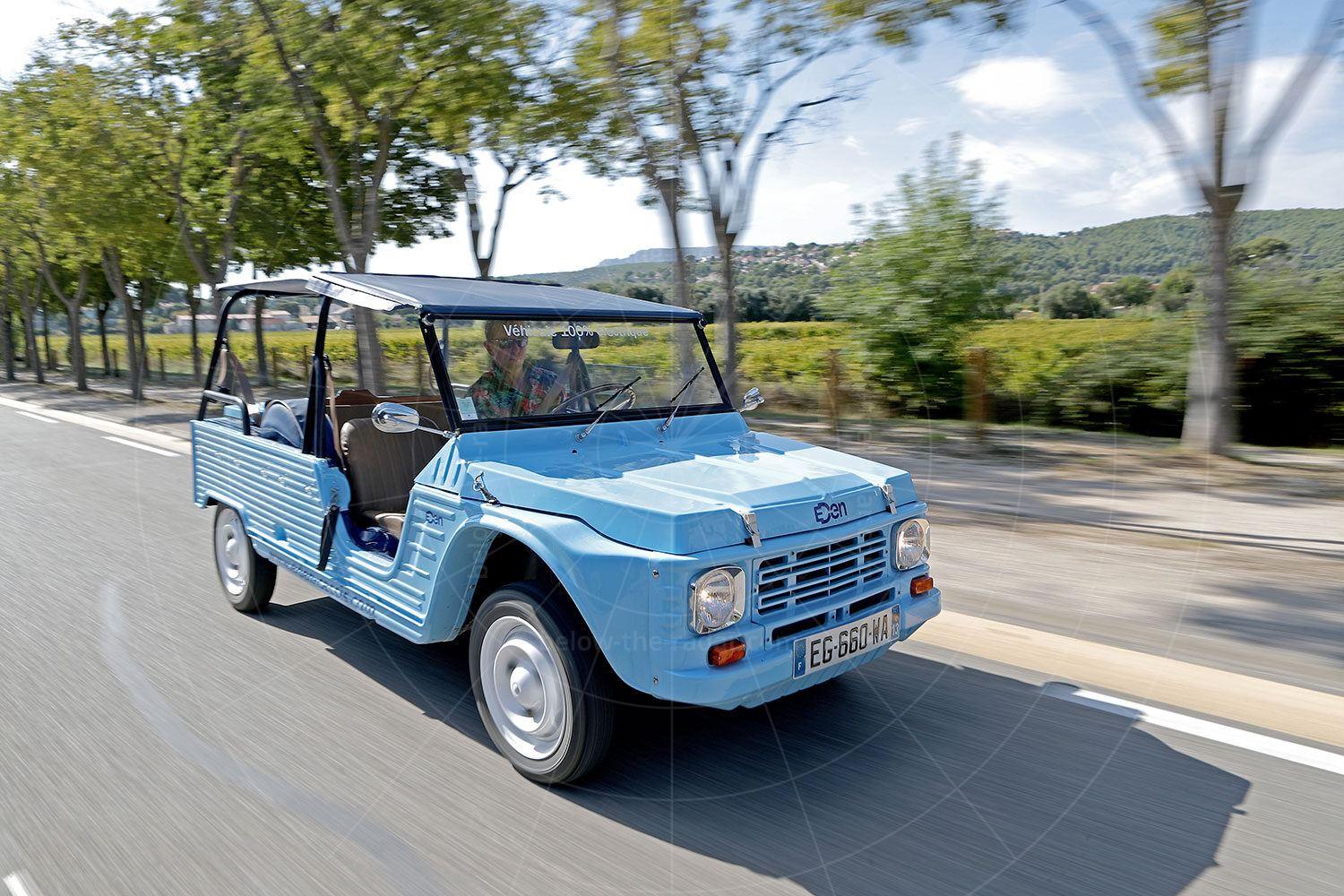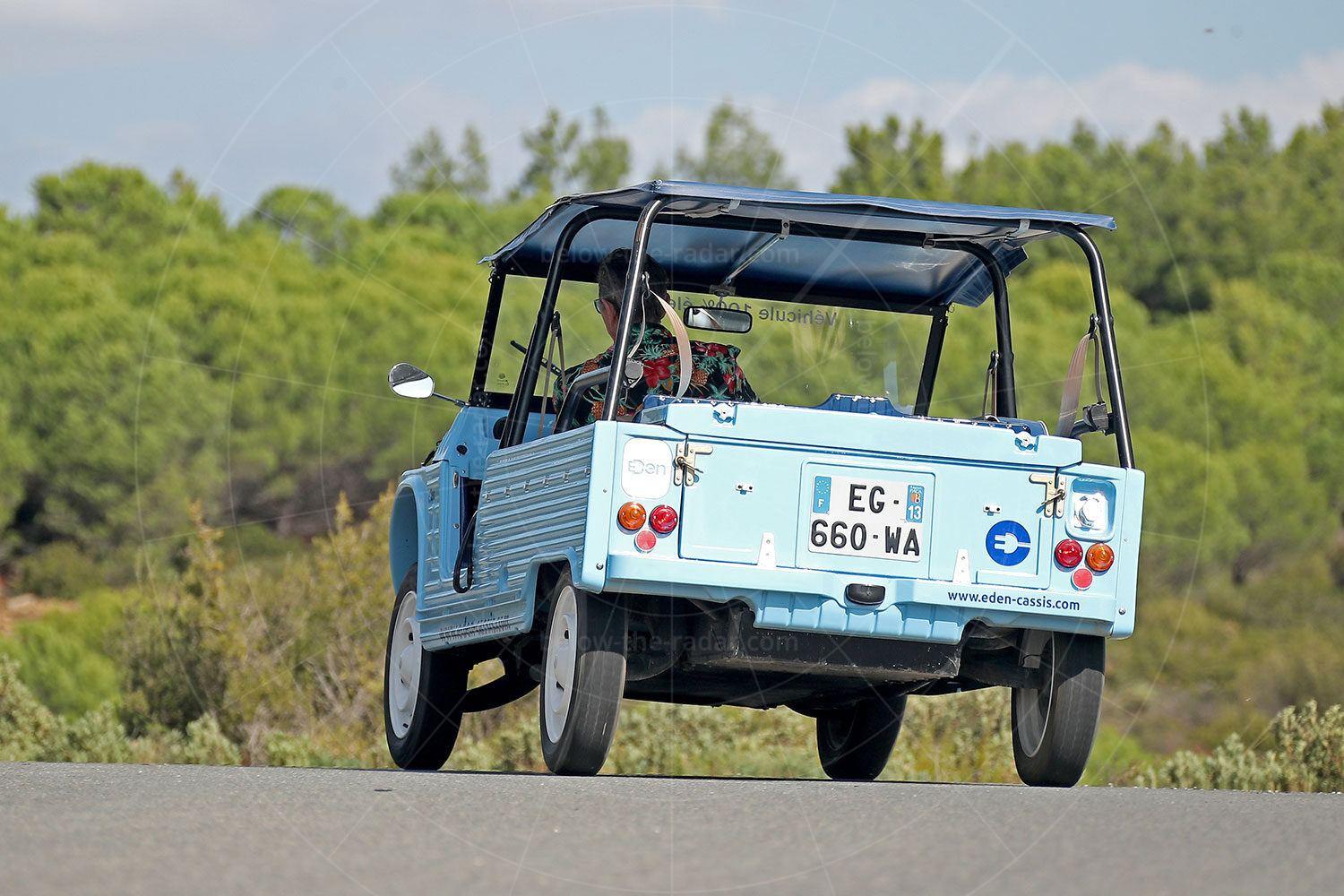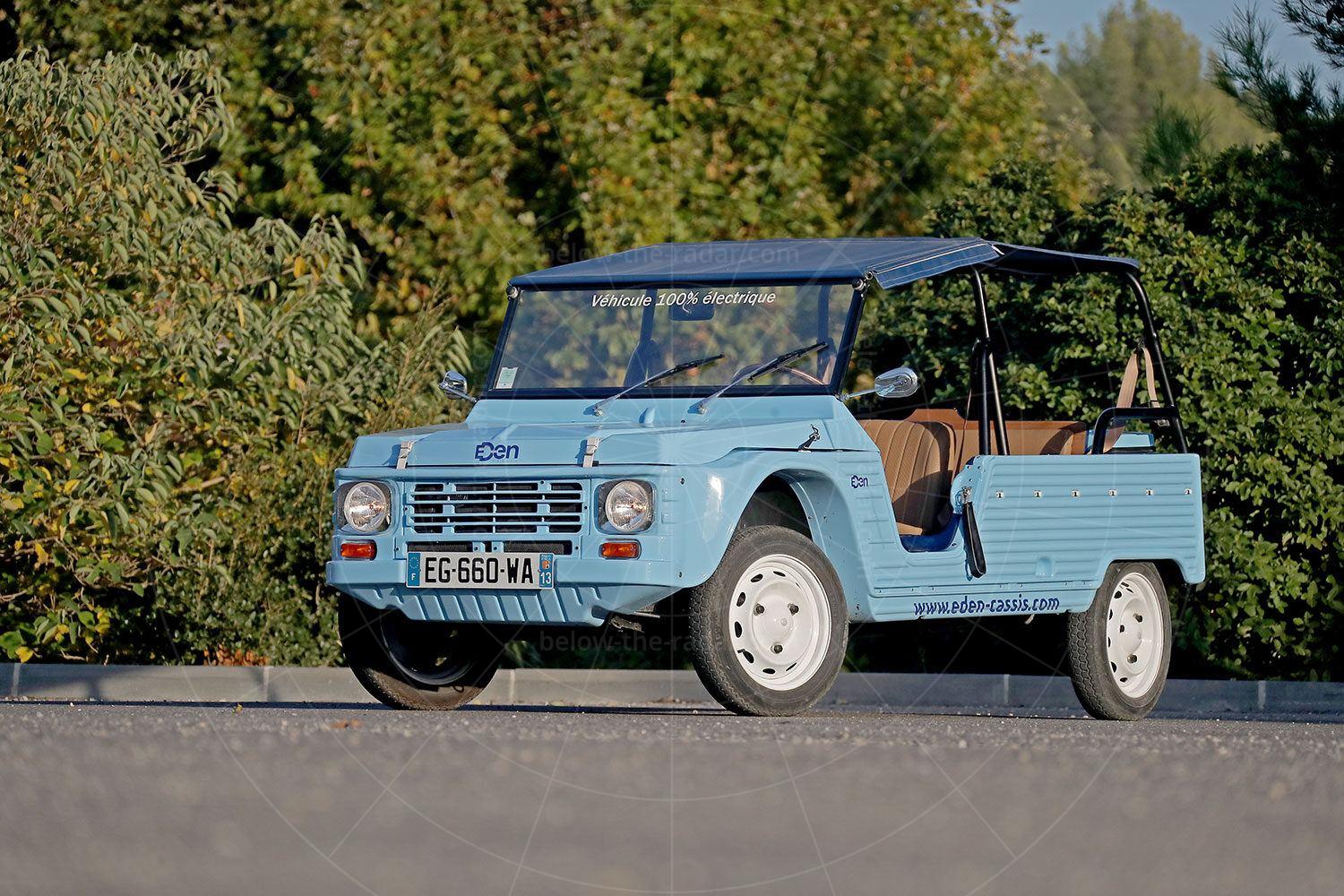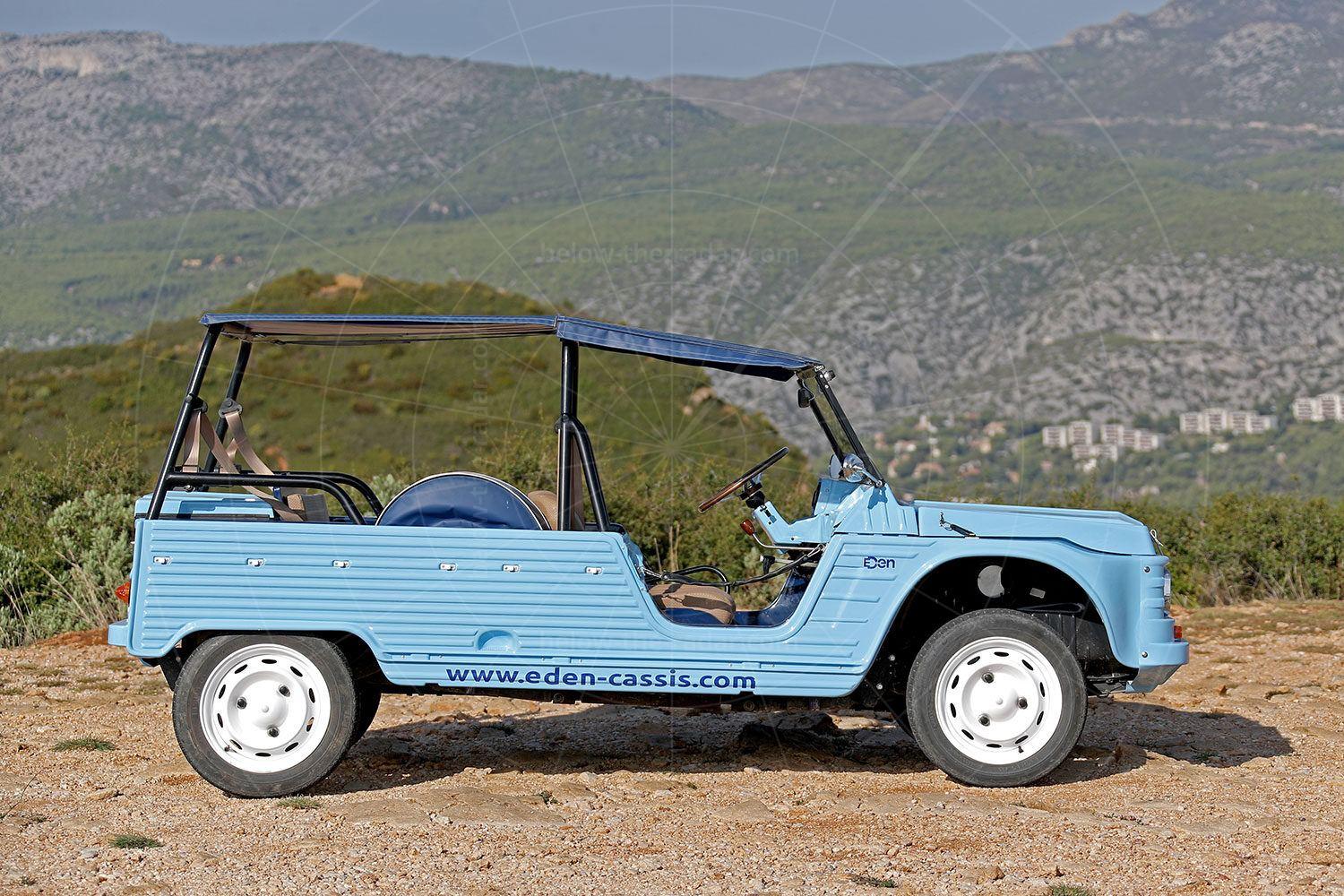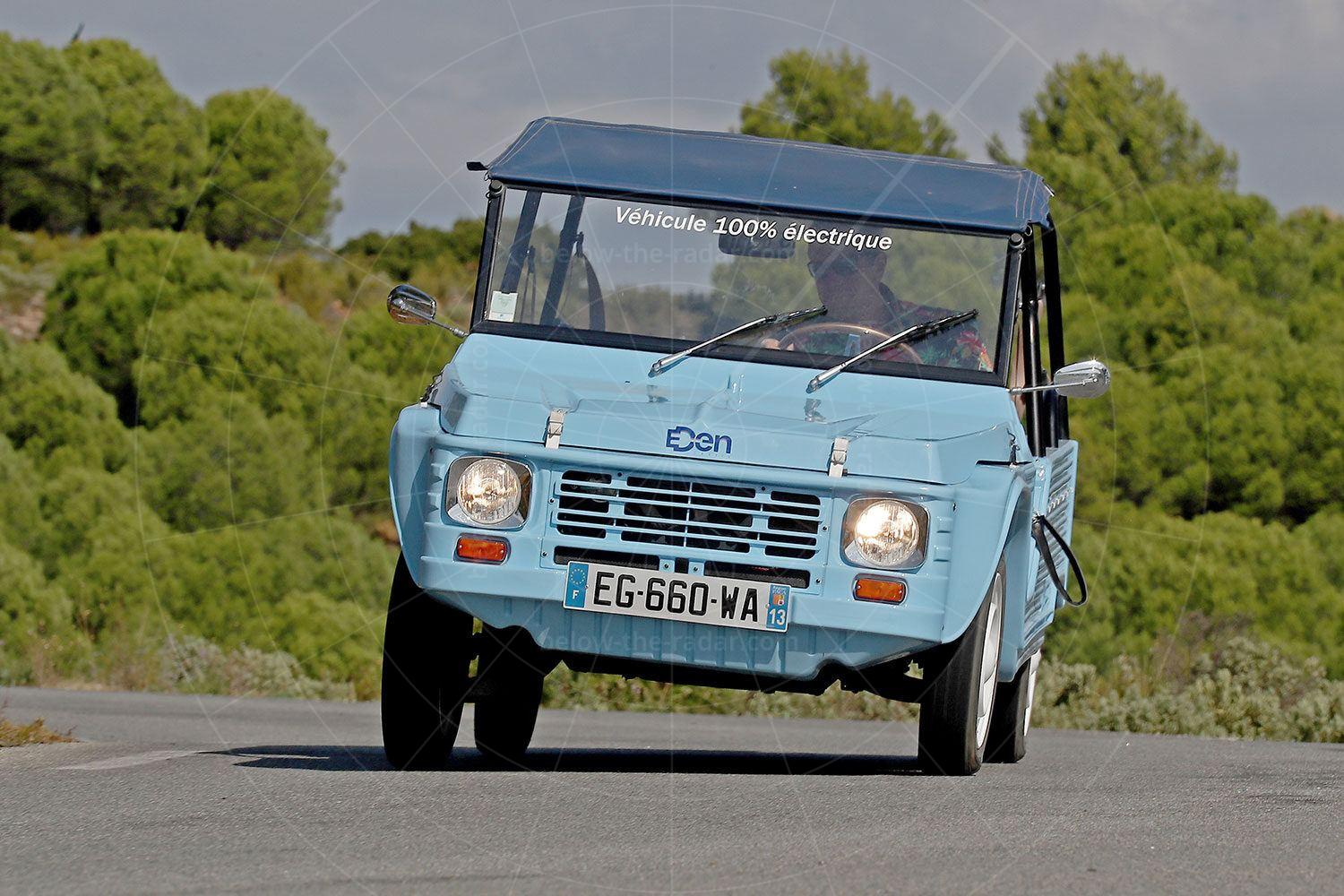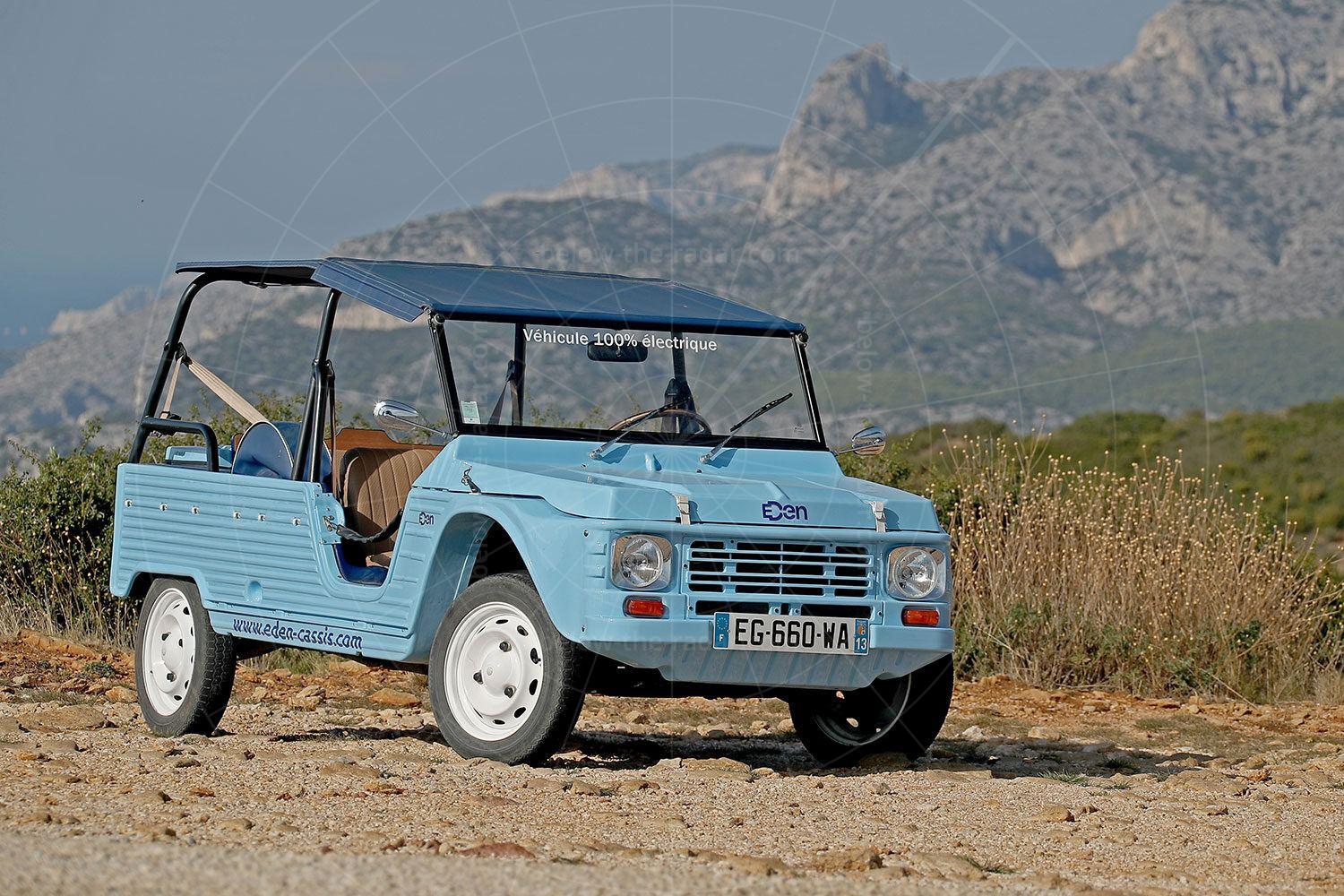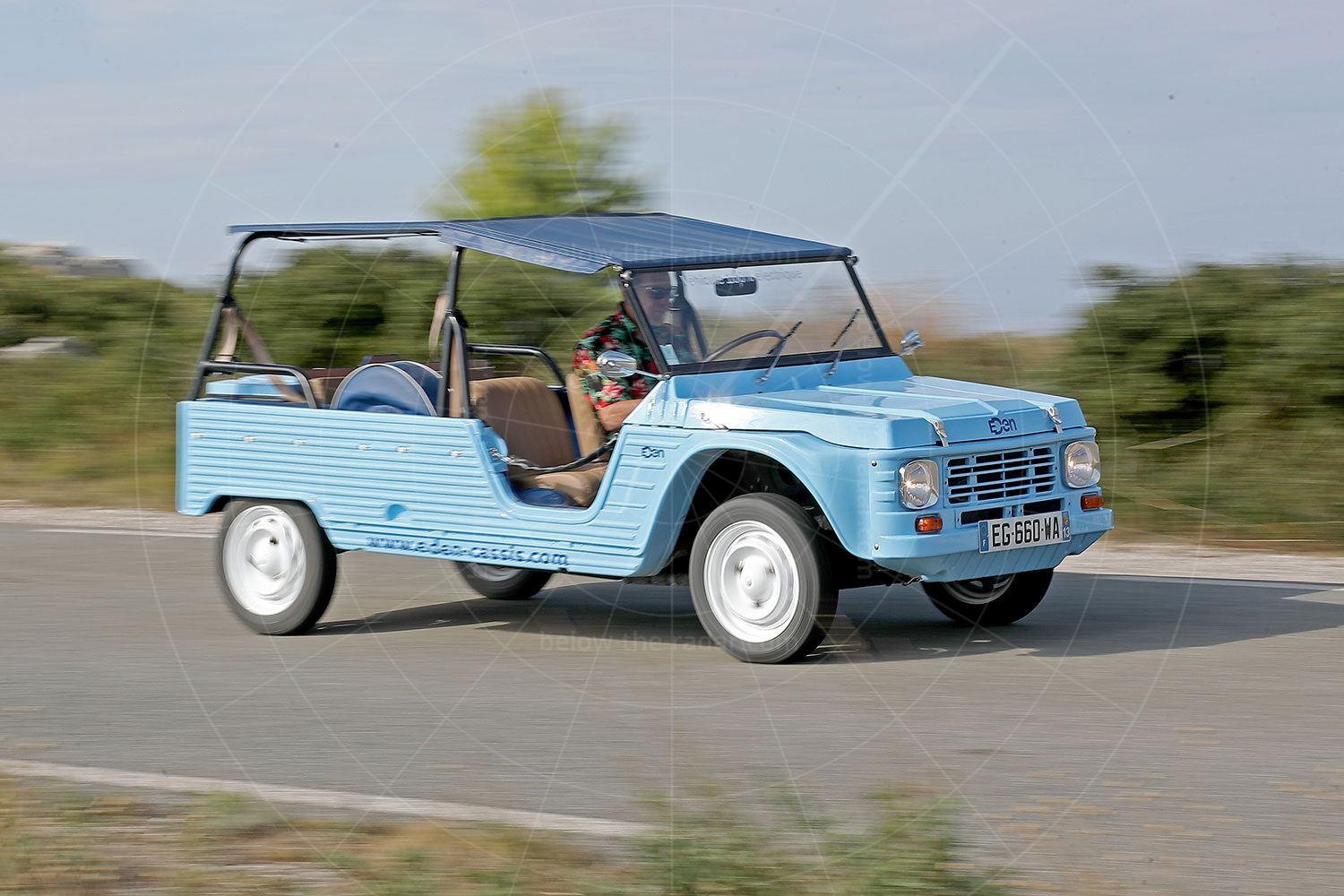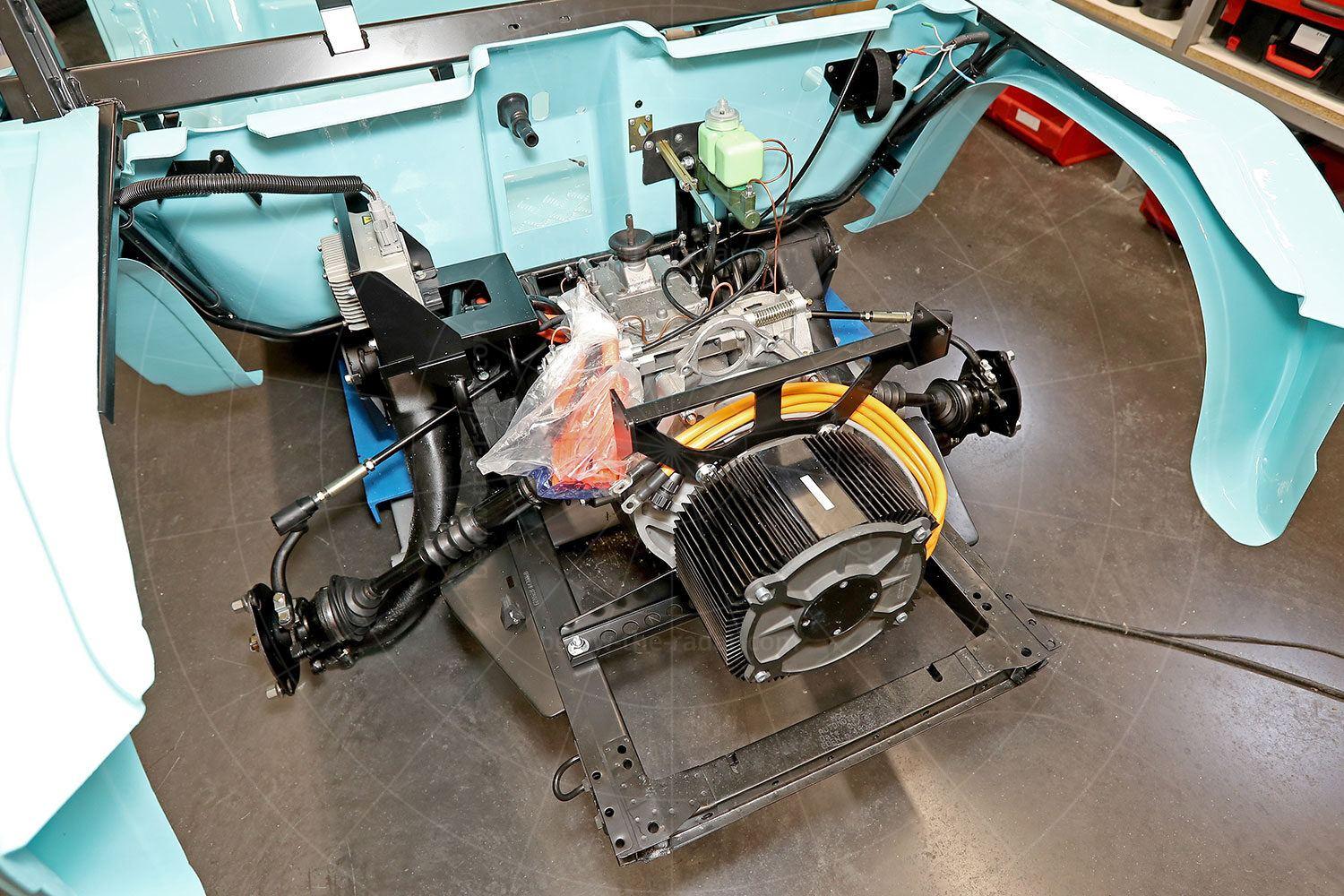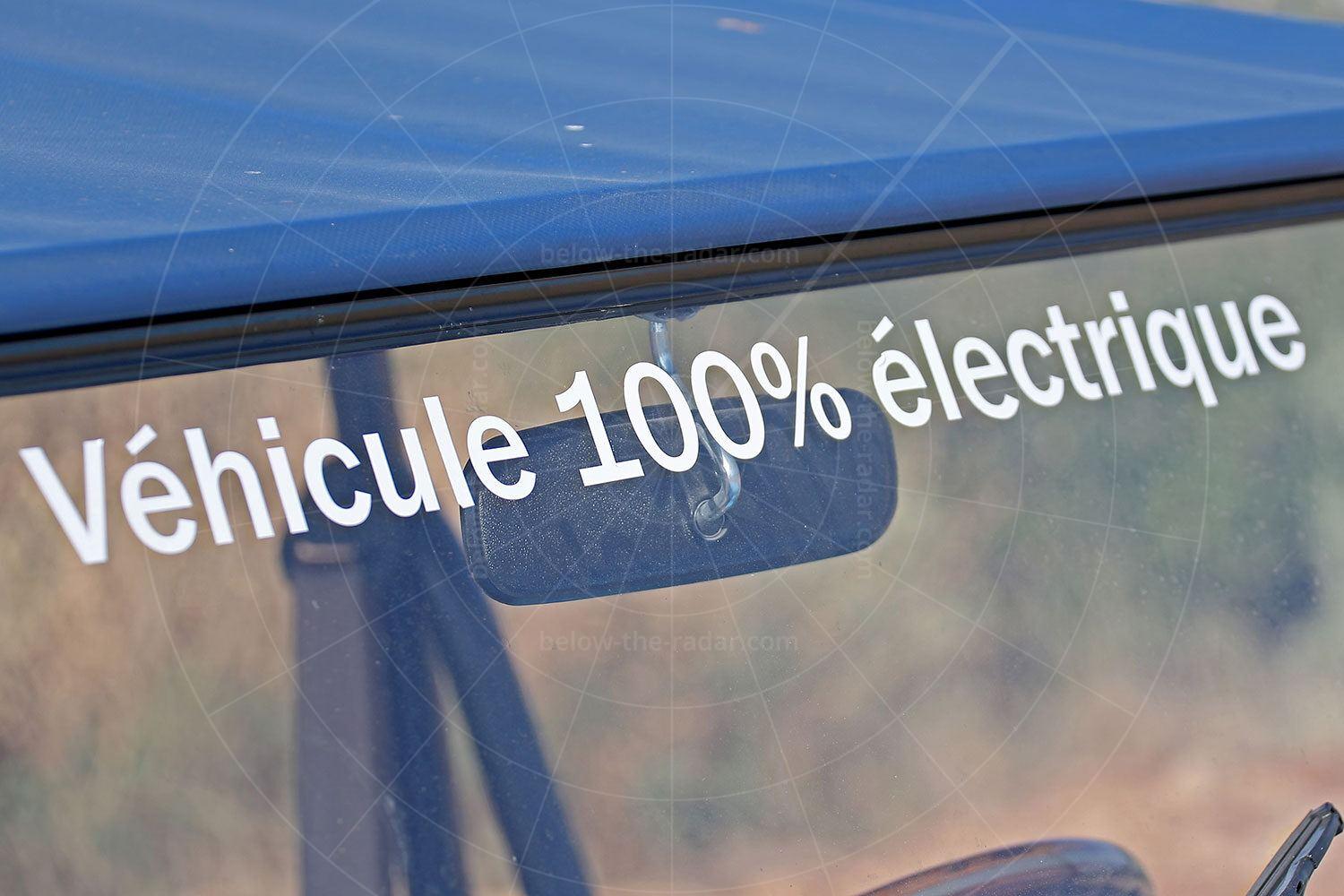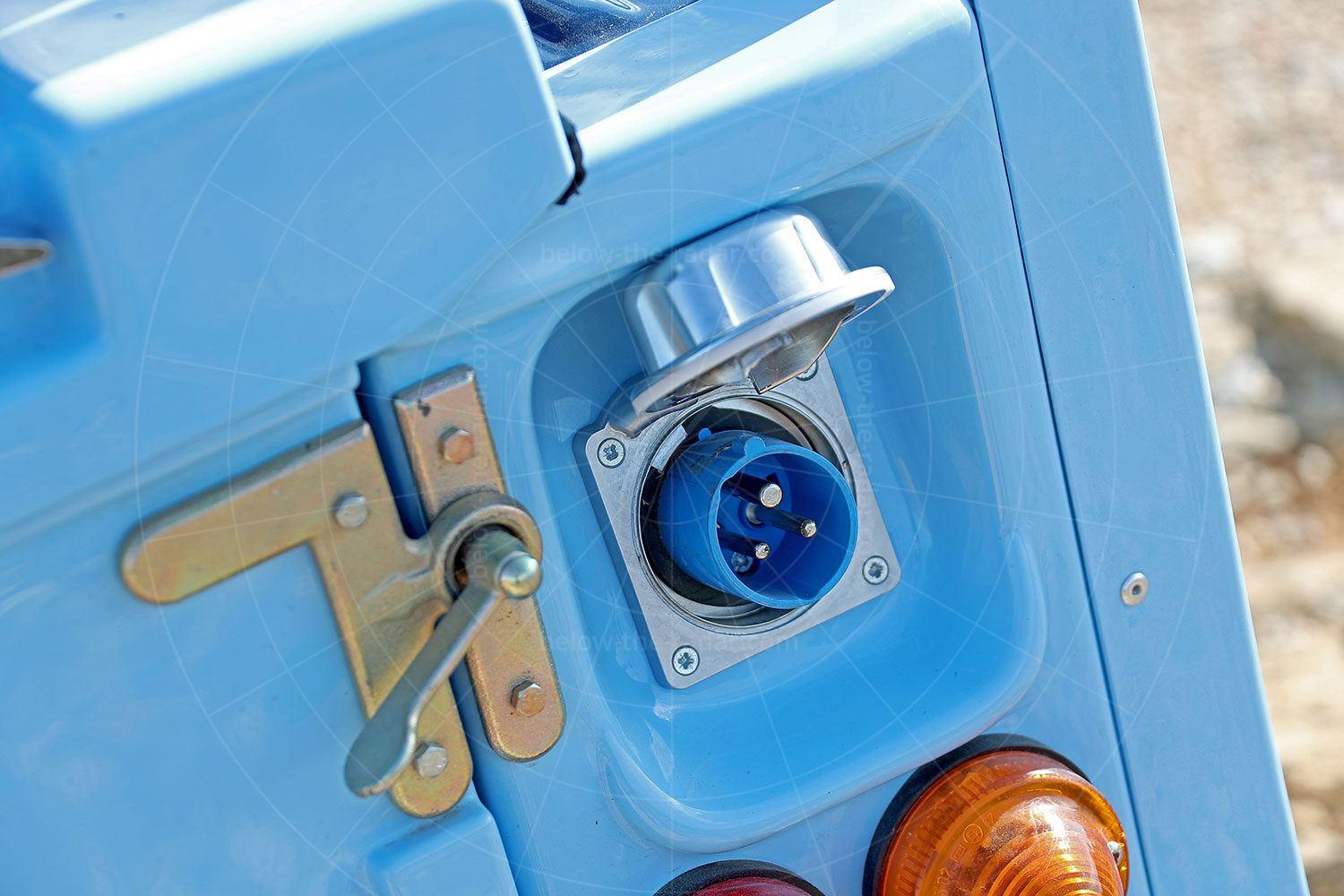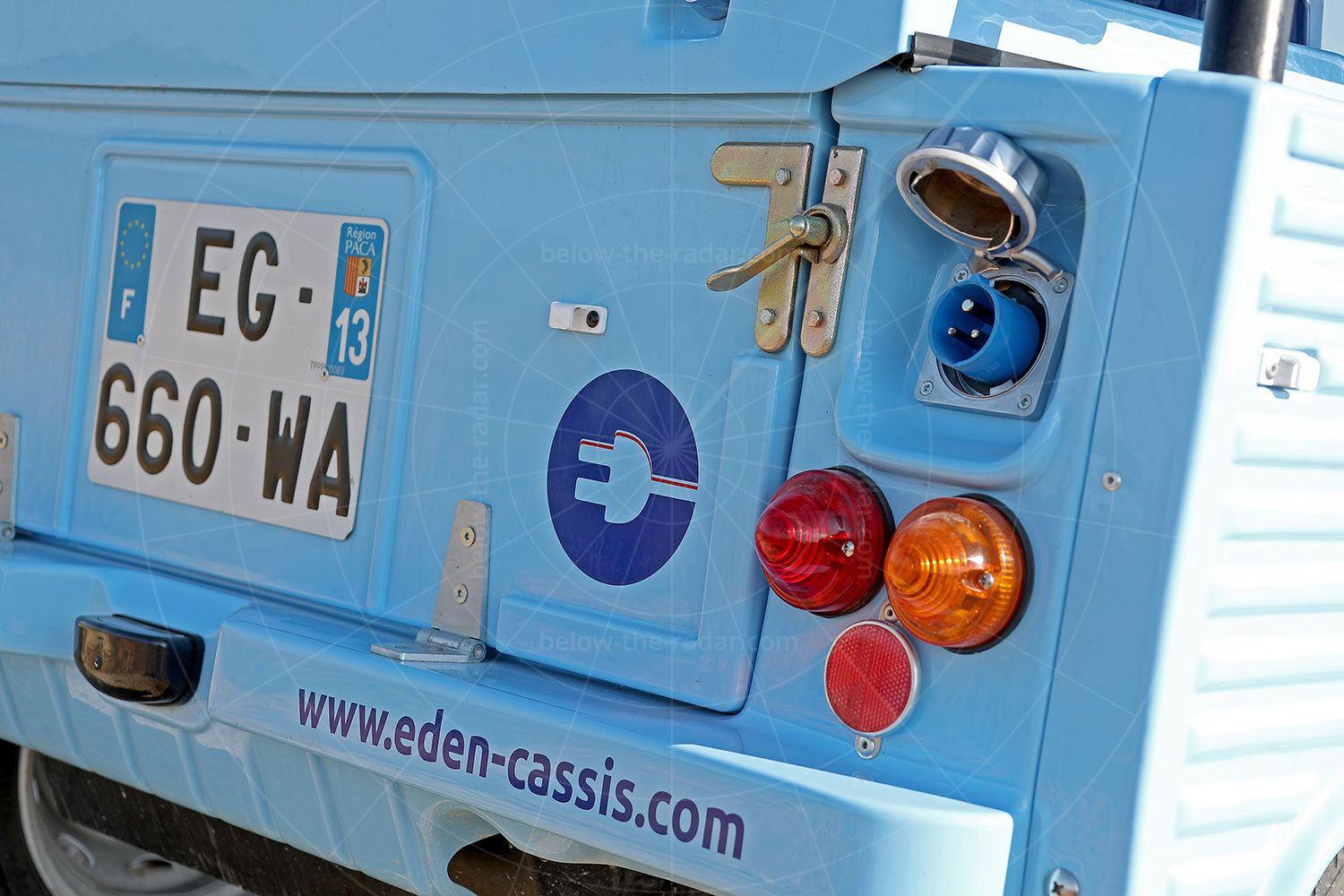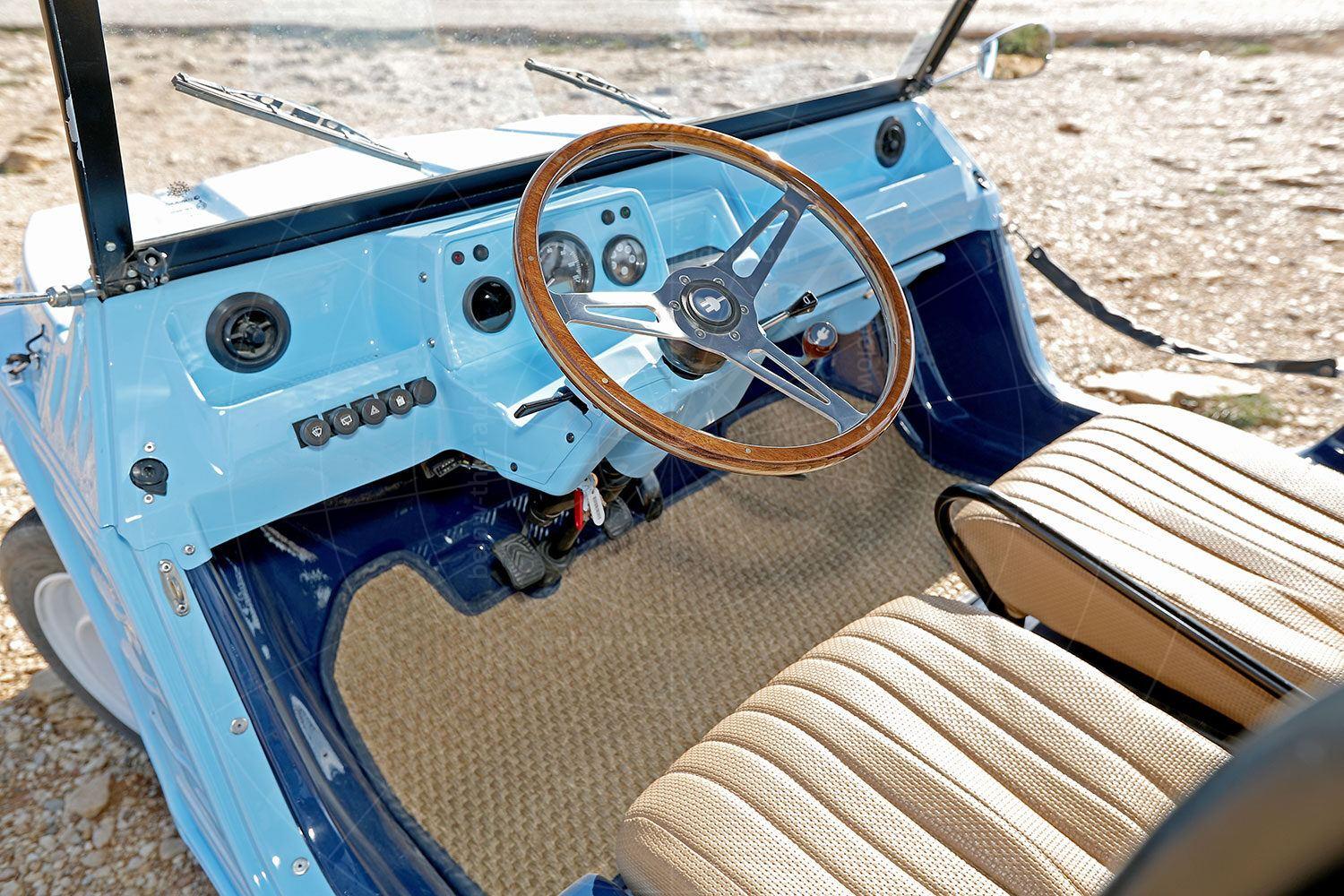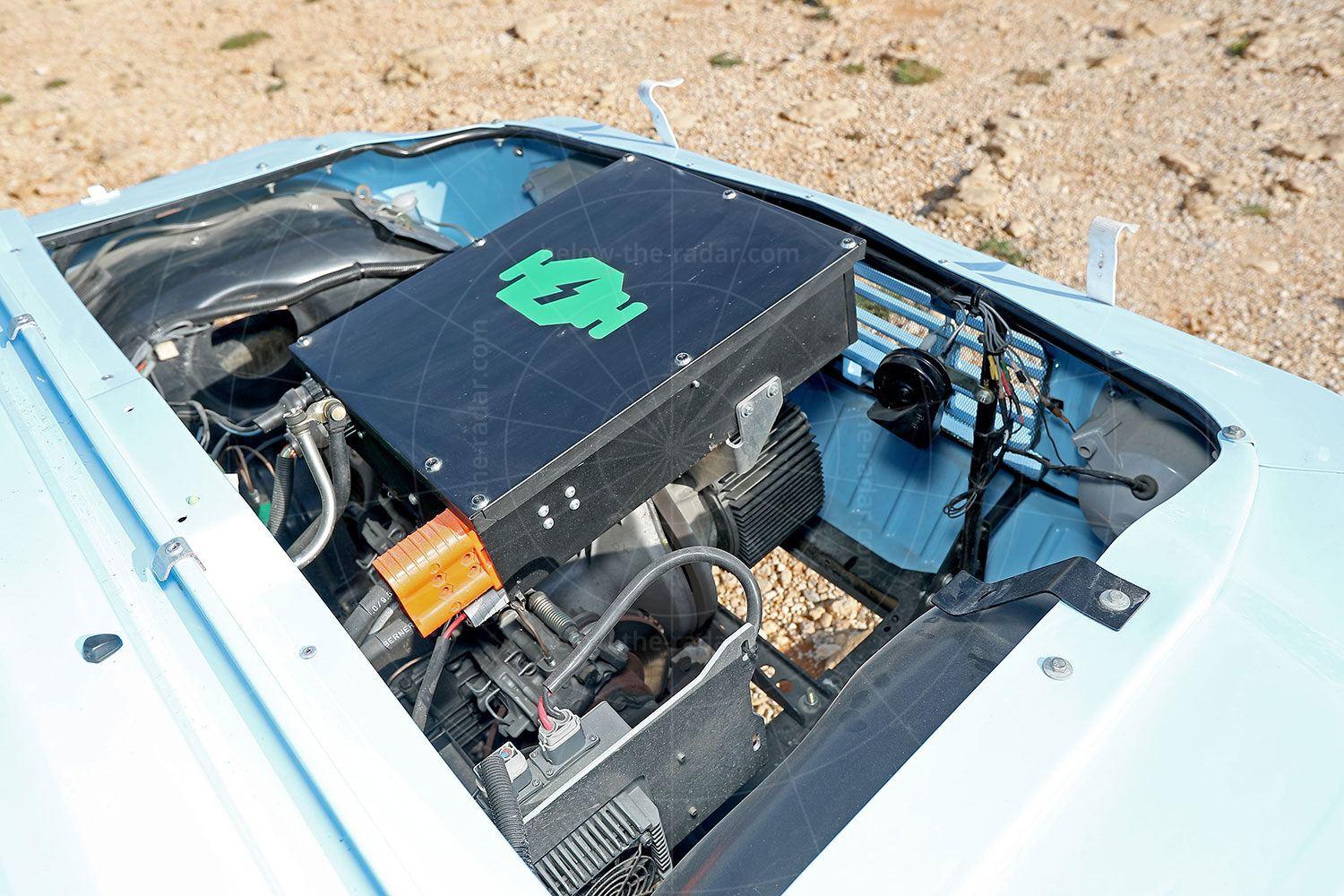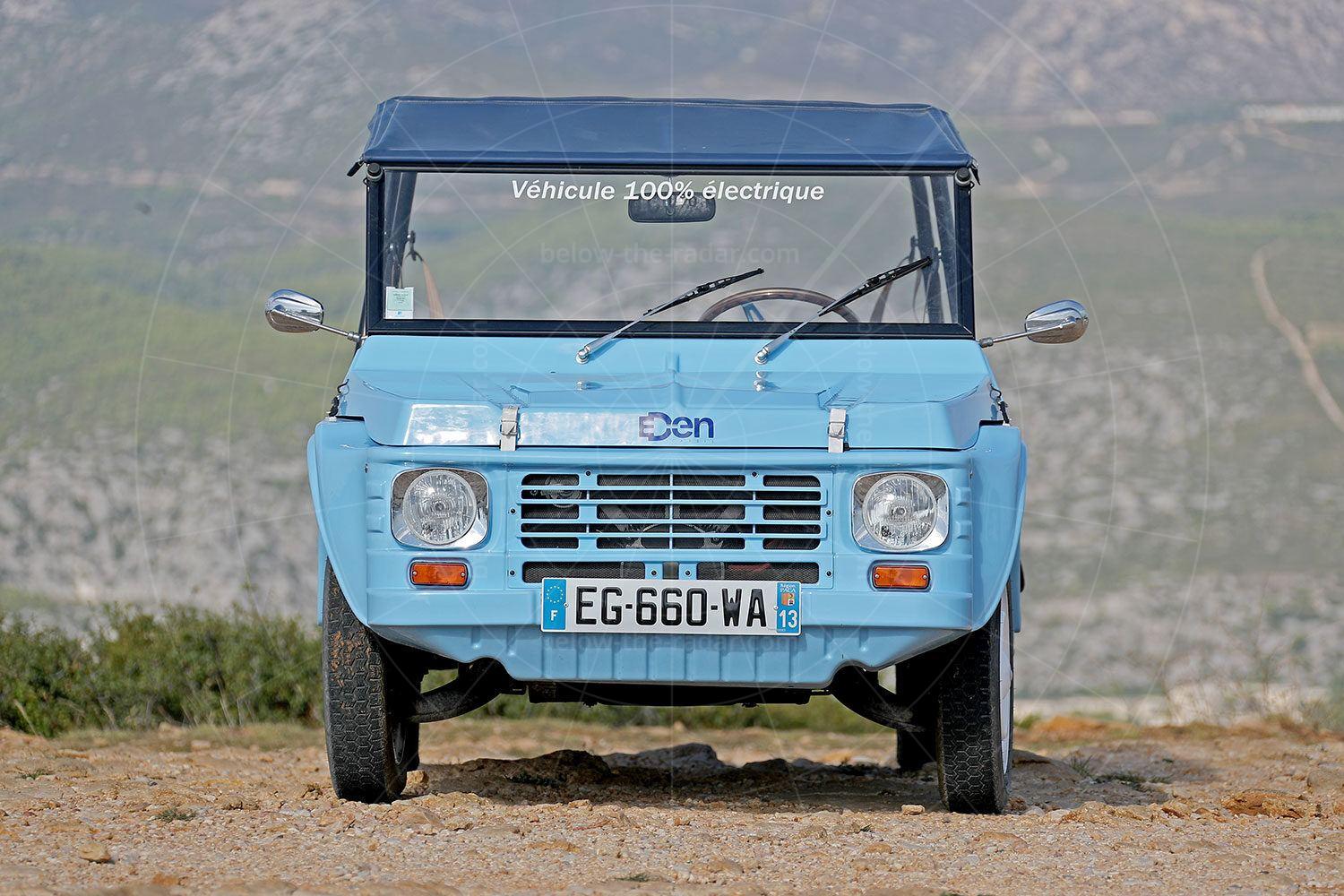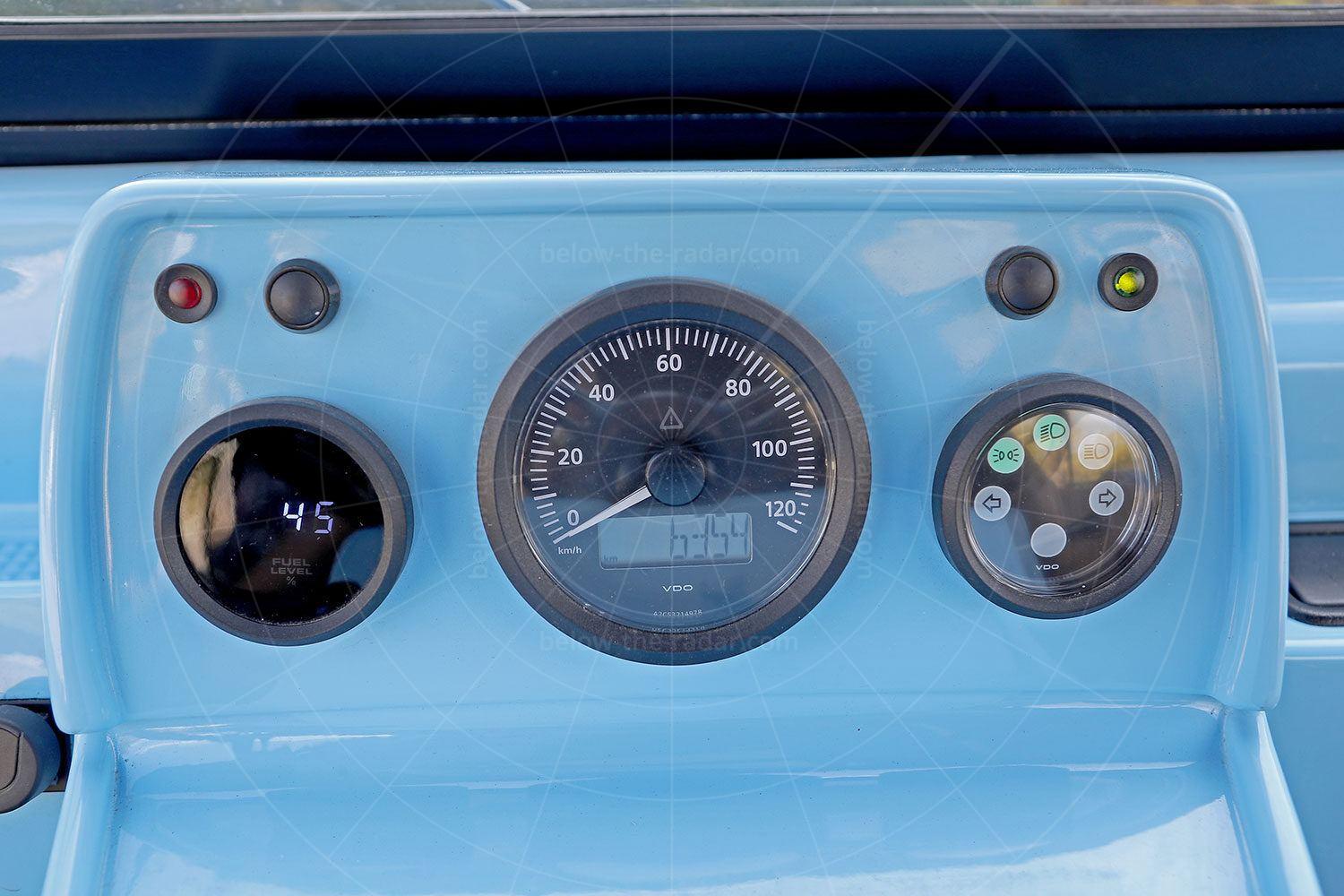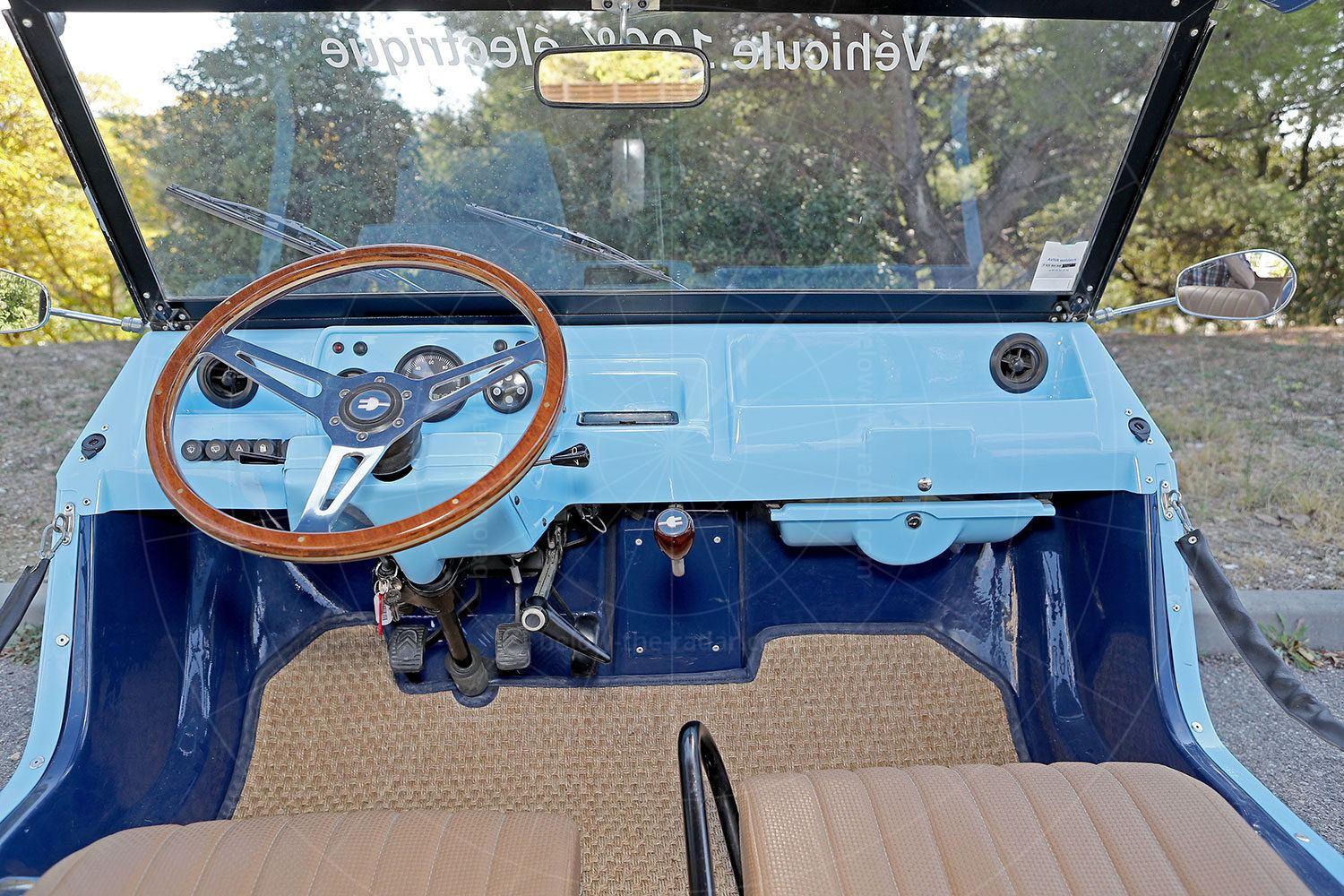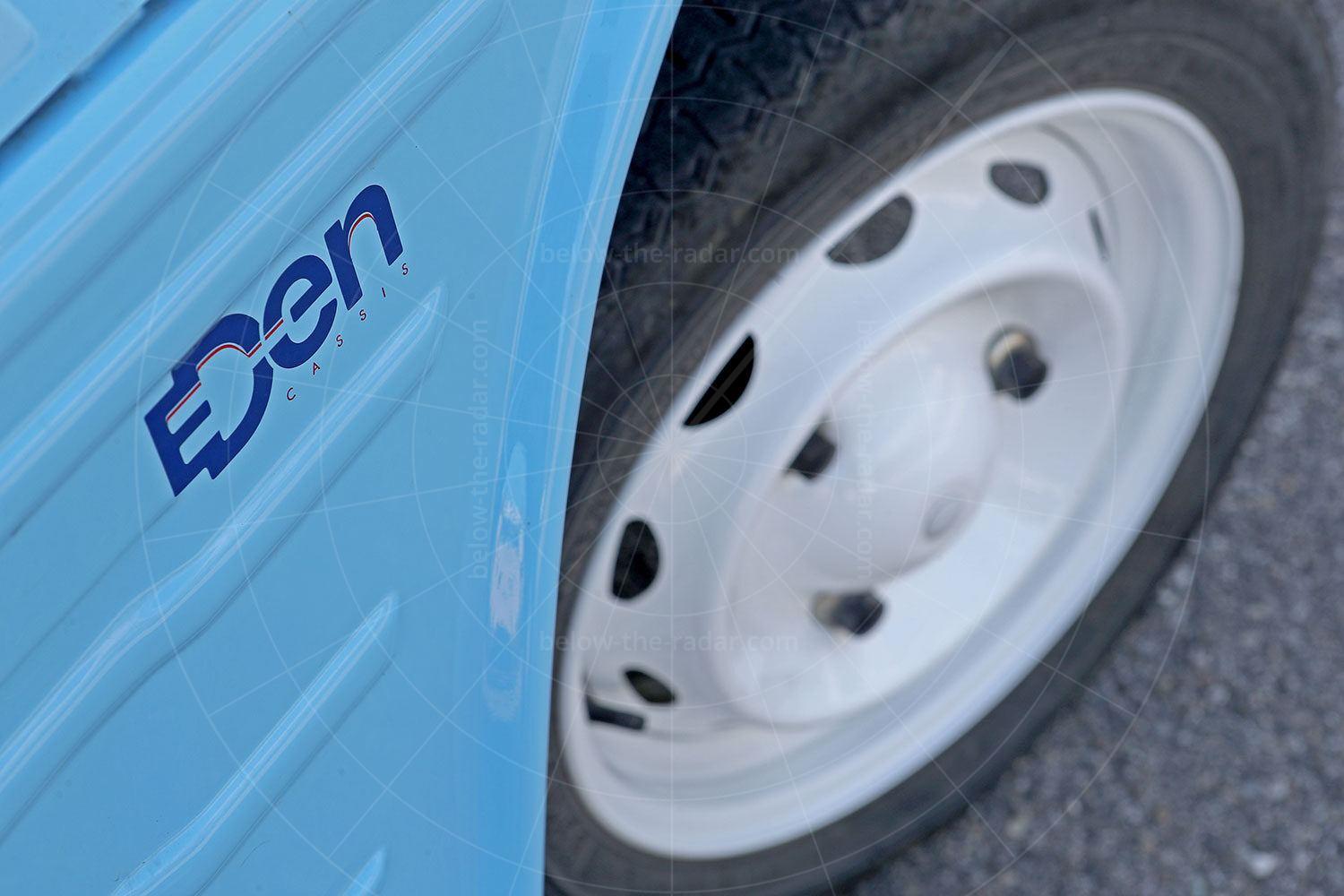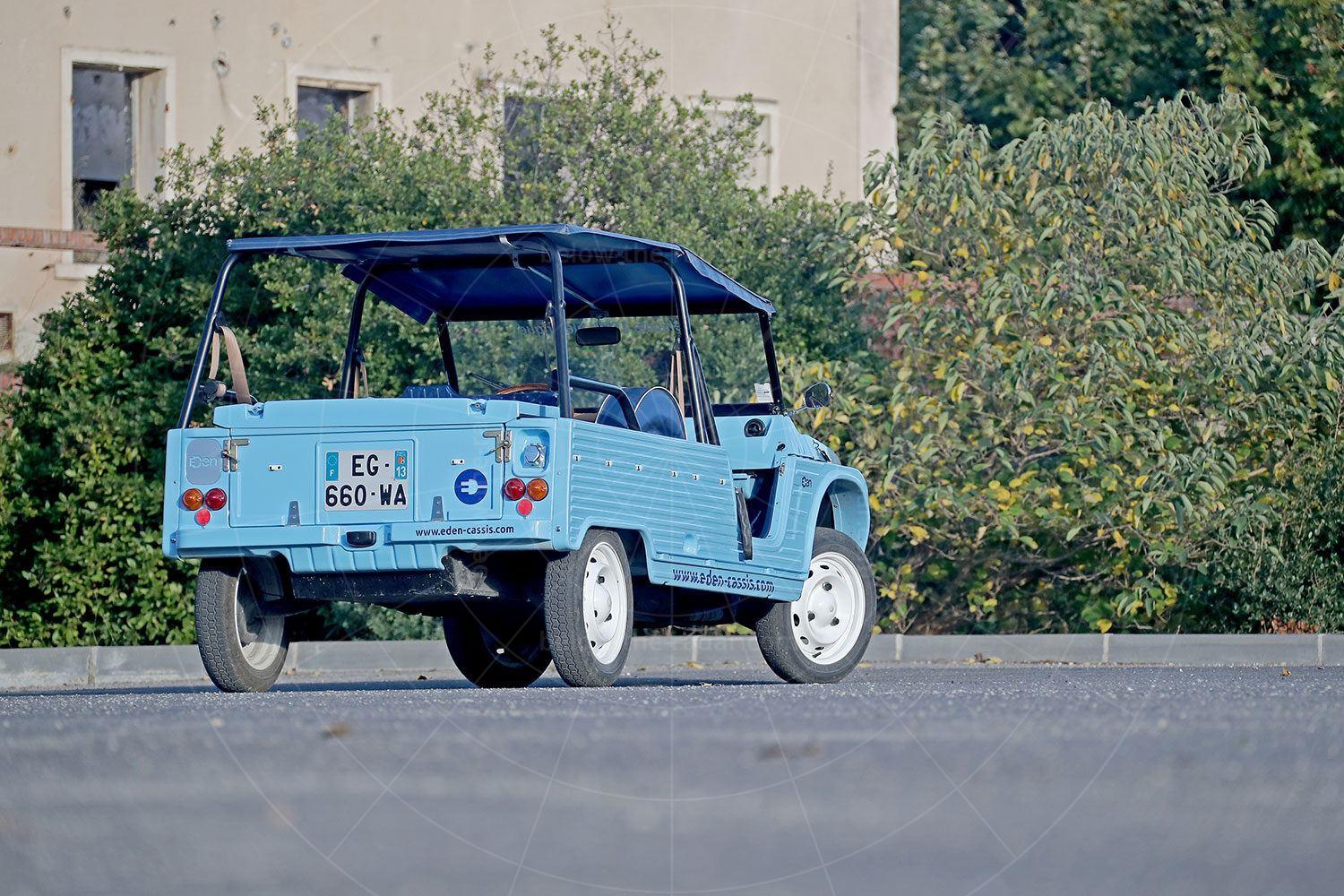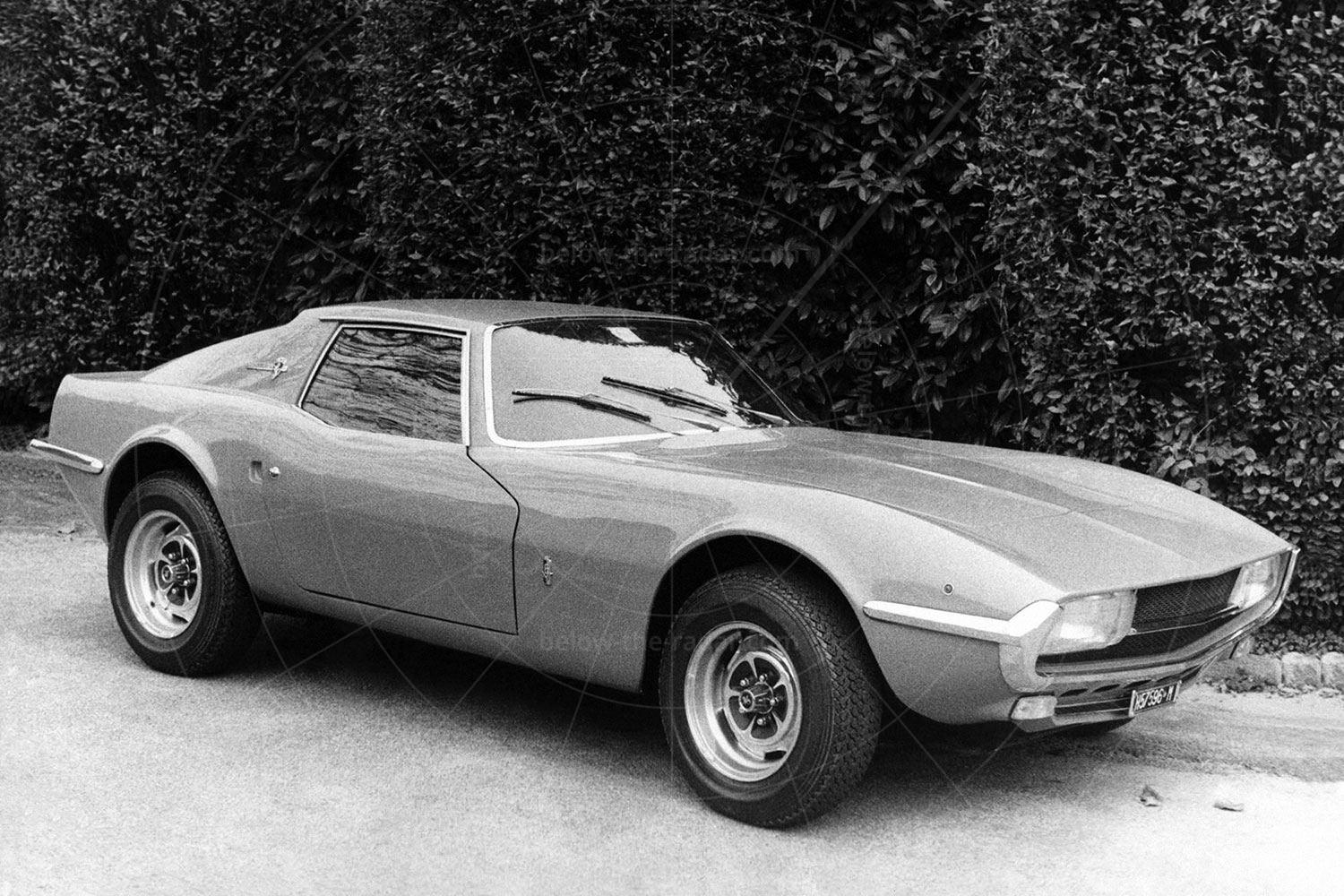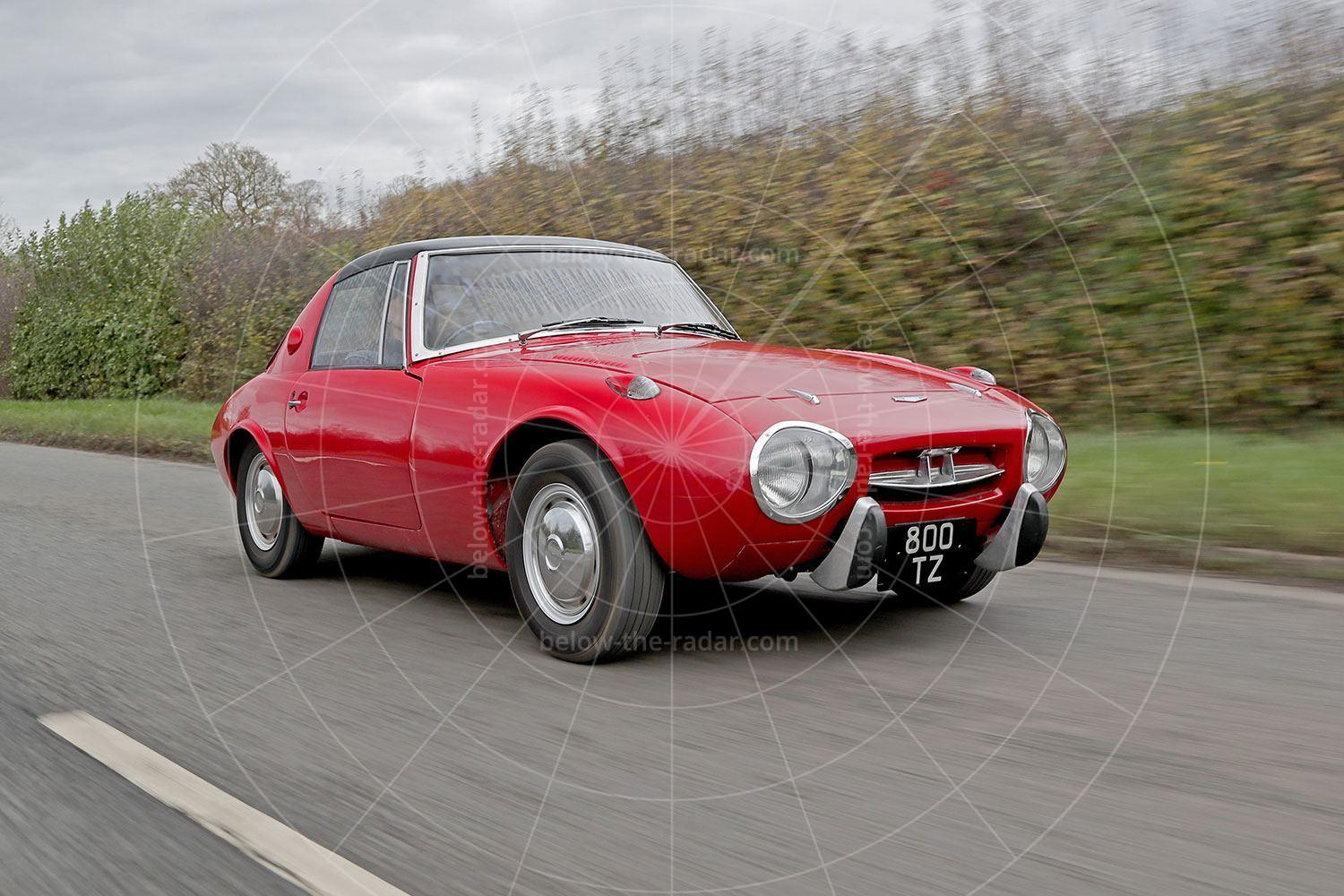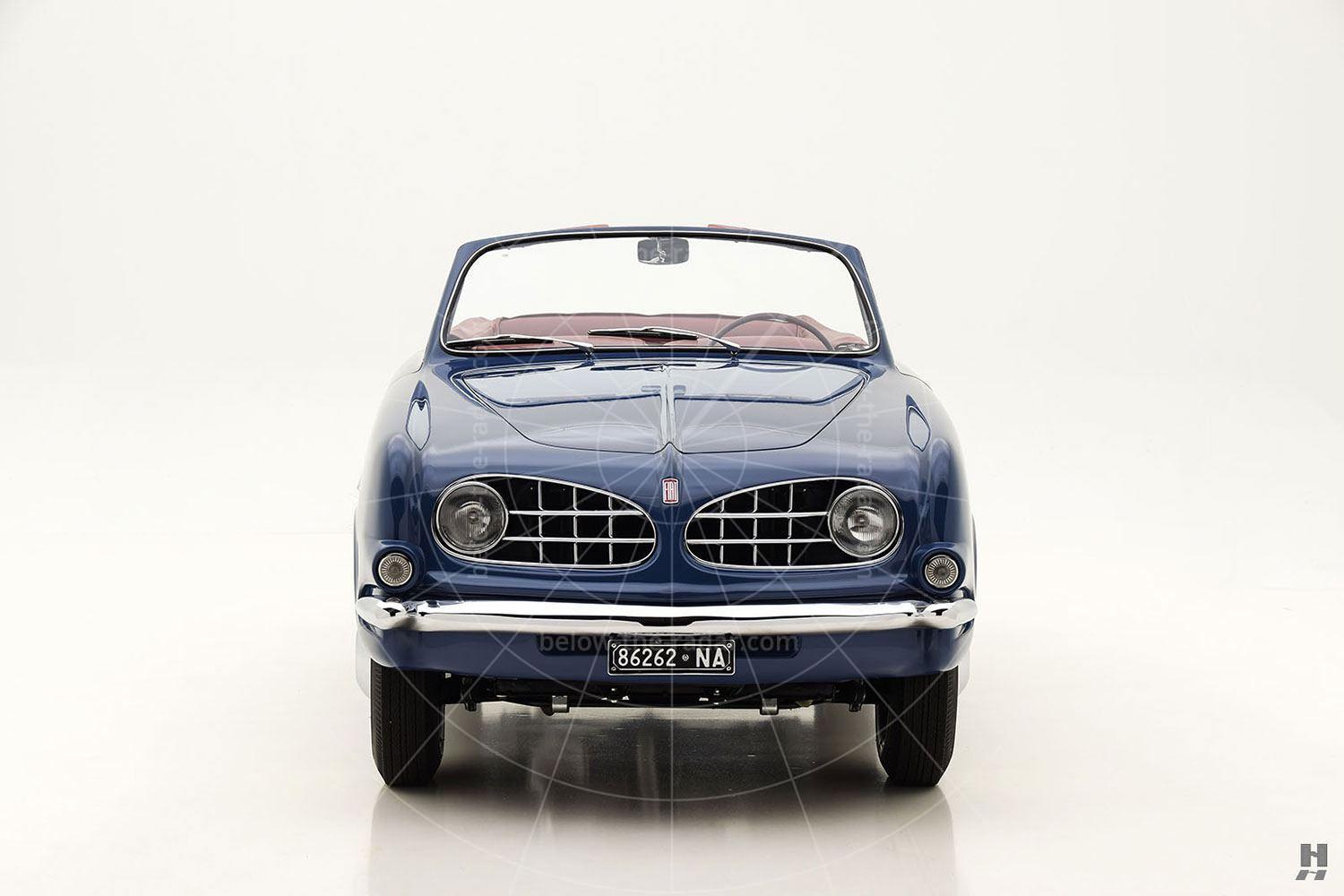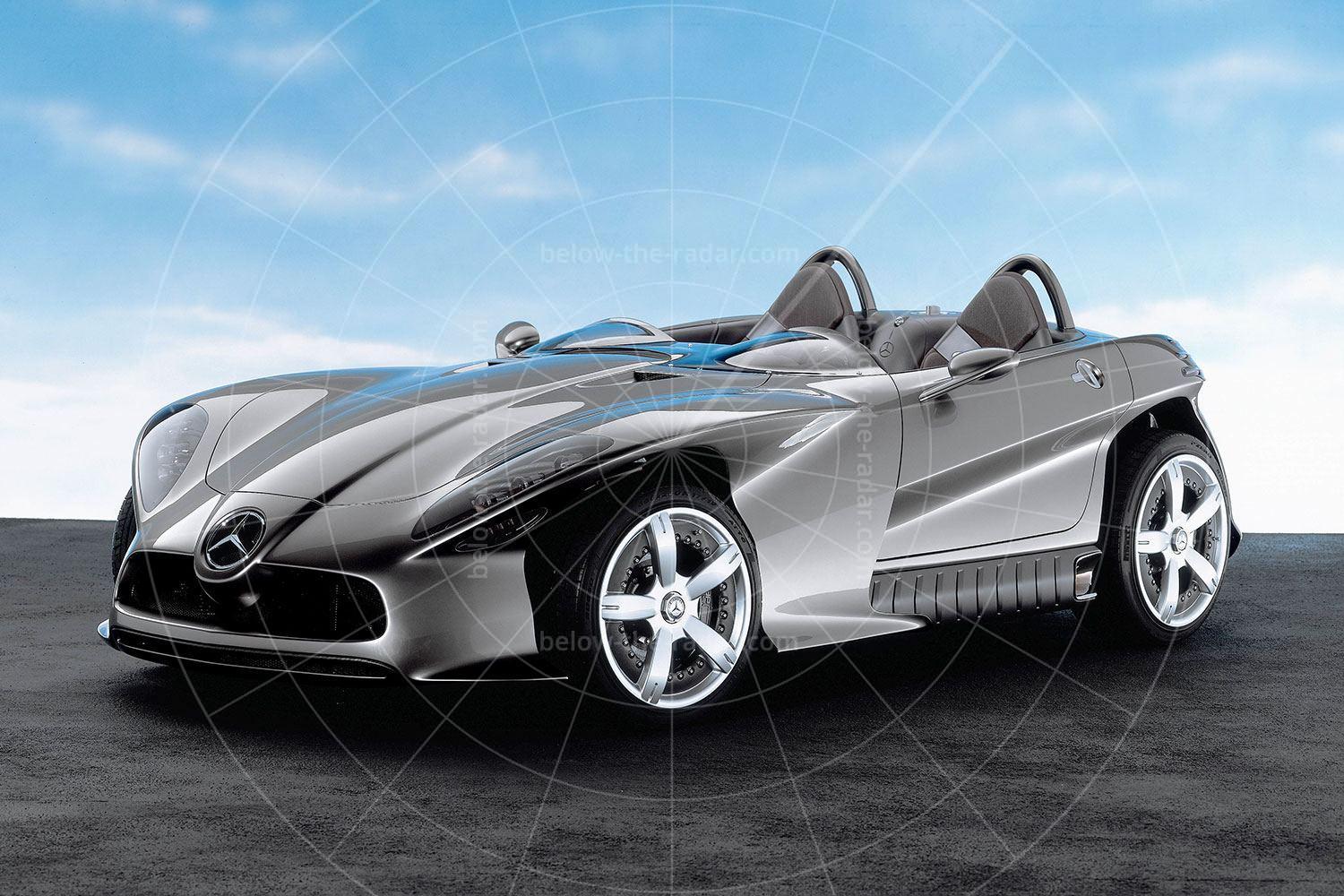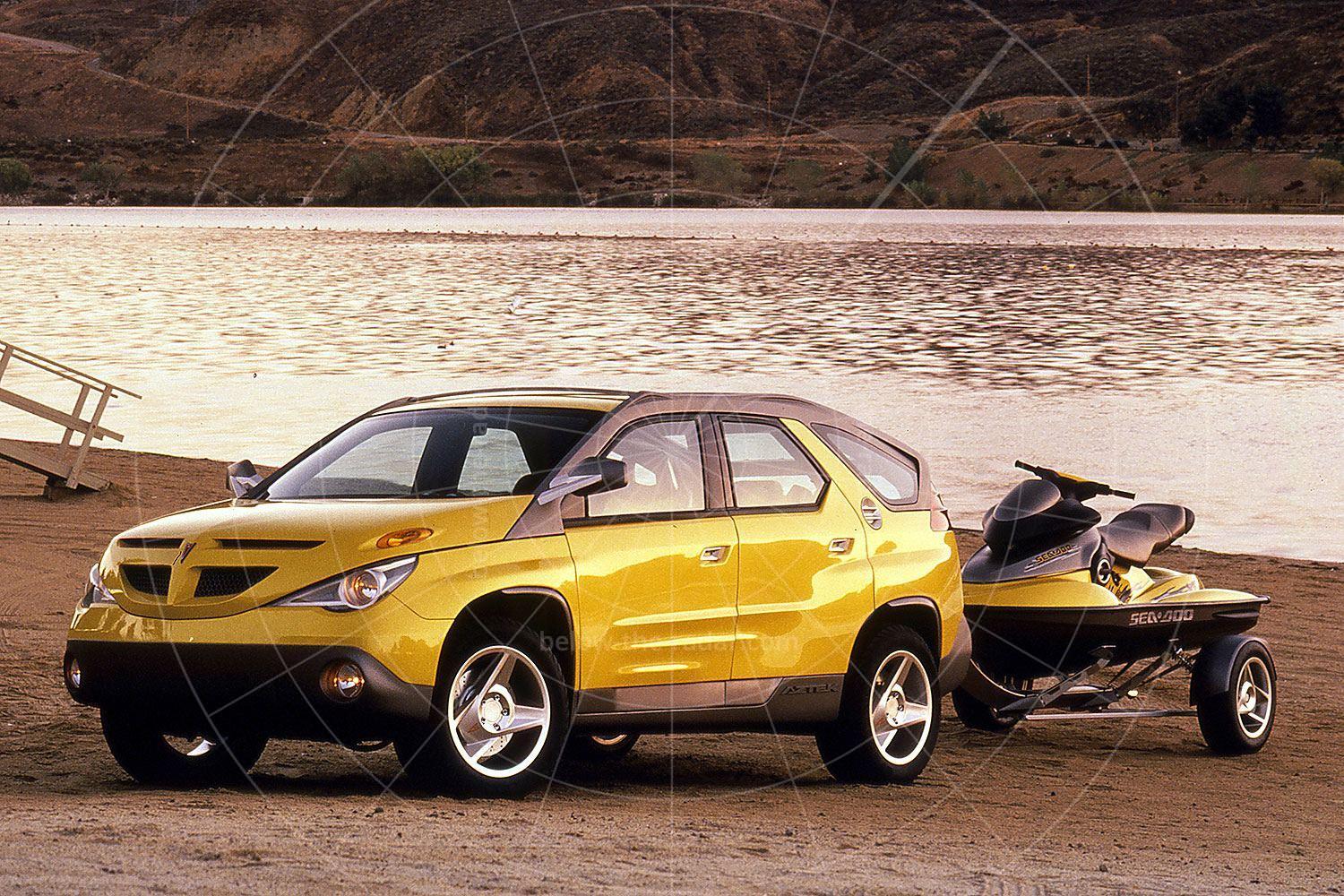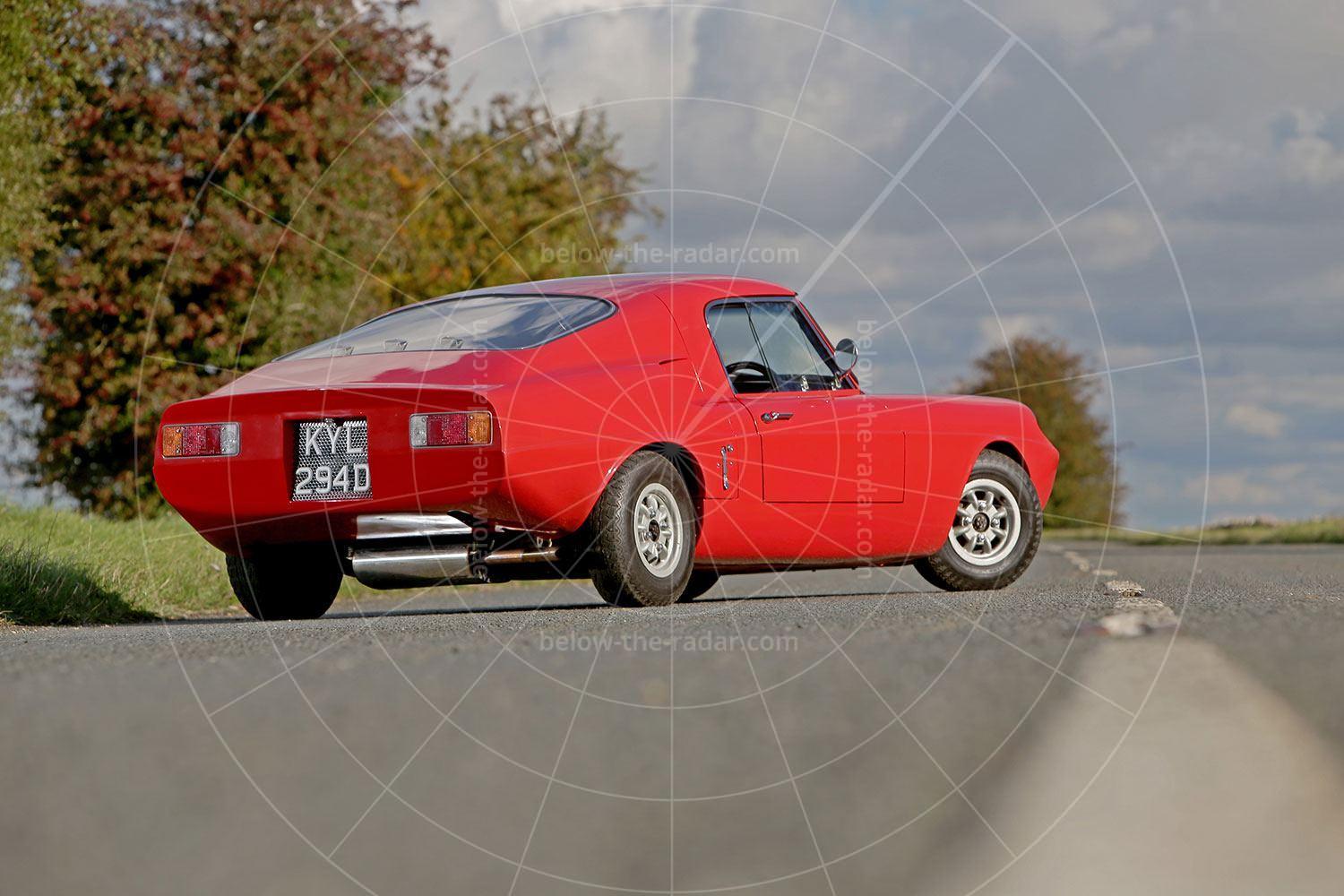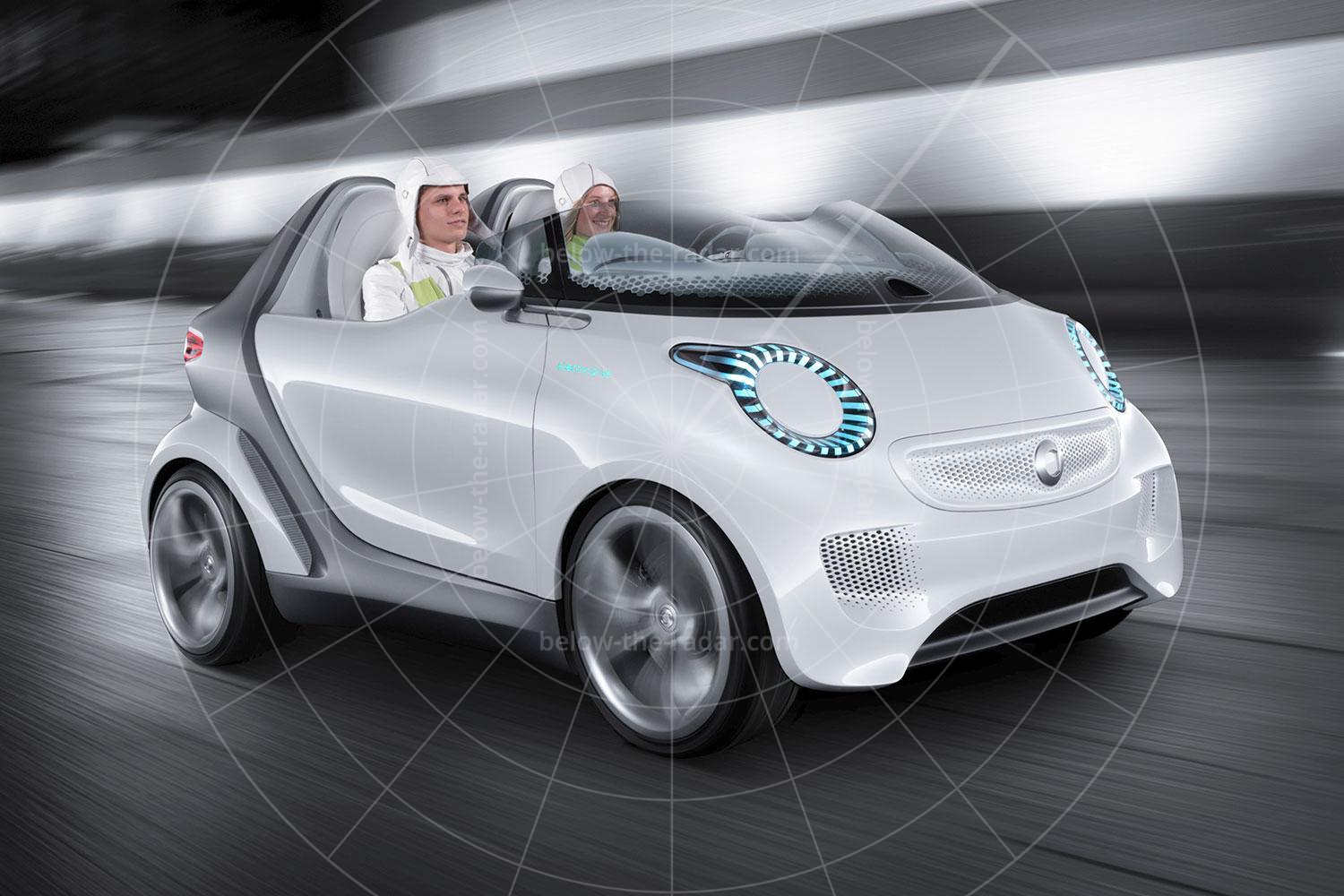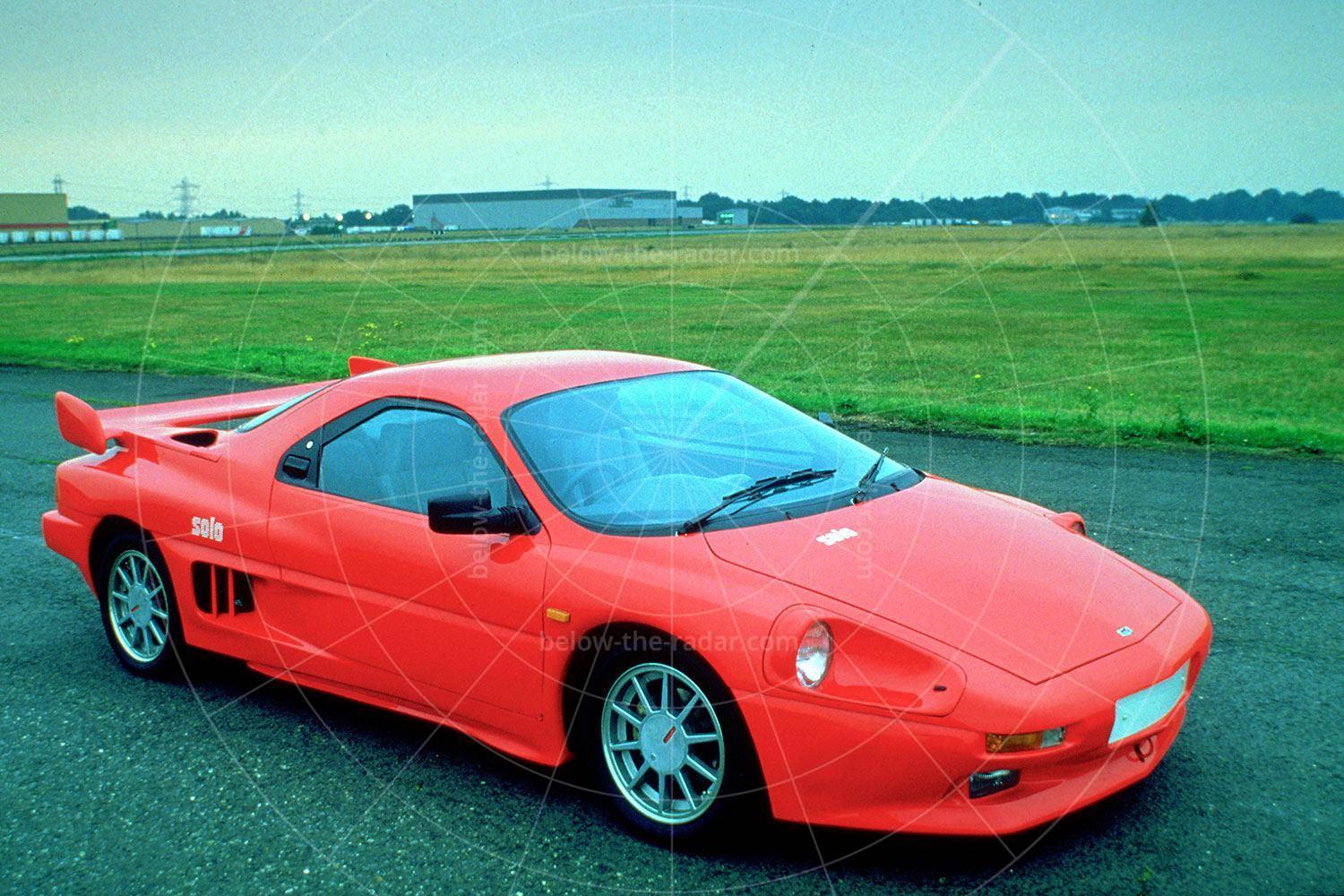In spring 2016 Citroen introduced its e-mehari, an open-topped four-seater EV developed in conjunction with French electric car specialist Bolloré. Despite the name, the e-Mehari borrowed little from its 2CV-based forebear – unlike the Eden pictured here. Developed and produced by French company 2CV Mehari Club Cassis (MCC), the Eden is a genuine Mehari powered by an electric motor instead of an air-cooled two-cylinder petrol engine.
With a bodyshell made of ABS plastic, mounted on a steel chassis, the lightweight Mehari is an ideal car to convert to electric. MCC (mehariclub.com) was set up in 1982 to remanufacture Mehari parts, and later 2CV bits, using the original tooling. On a trip to MCC I had a chat with Maxime Cabanel, the Eden's project manager. A veteran of multiple classic car restorations, he's no stranger to how old cars are put together. He told me: "It was obvious to us that electric cars were the future, so we decided to put one of our own into limited production. We specialise in the Mehari and 2CV so we decided to start with the former and at some point we hope to have a fully electric 2CV for sale.
"These aren't restored cars converted to electric; they're brand new vehicles with all new parts. This means they have to comply with lots of regulations that control cars sold across the EU; the certification restricts the weight to 450kg, the power to 15kW (22bhp) and there are a lot of other rules too. The project started in early 2015, we achieved certification in 2016 and the first customer cars were delivered in summer 2017. Production has now settled down at the rate of two cars each month which is our capacity, but if we can recruit more staff we would like to double the rate of production.
"The biggest hurdle was engineering everything to be safe and strong, but without adding weight. The plastic bodyshell helps here, but it's the roll cage that made things difficult for us; this is the single heaviest item on the whole car apart from the 142kg battery pack. Driveability was another focus as we wanted Eden owners to be able to drive their cars in the same way that they could an original Mehari with a petrol engine. Perhaps most importantly though, the Eden had to look as much like the Mehari as possible, even if it sounds rather different".
MCC has been clever as it hasn't engineered a complete new drivetrain for the Eden; all it has done is swap the original flat-twin petrol engine for an electric motor while retaining the original gearbox, brakes and driveshafts. Also carried over are the steering, suspension, bodyshell and the frame that it sits on – albeit in modified form to accommodate the batteries. The company also offers an automatic Eden (called the Eden Easy), but unless you're a complete dunce behind the wheel there's no point buying one of these when you drive the manual like an auto anyway.
The idea is that you just leave the car in third the whole time and let the torquey motor do its thing; it develops 72lb ft of torque compared with the 15lb ft of the Mehari's two-cylinder petrol engine. So light is the Eden, and so ample the pulling power, that you can start off in third and leave it there, but if you get to a particularly vicious hill and the car is loaded up you might want to drop down to second lest you grind to a halt. However, despite the fitment of a gear stick and a clutch, you don't need to use the latter to swap ratios, even when you're shifting between forward and reverse.
The Eden is very quick off the line, with really zippy acceleration at urban speeds. Impressively, MCC has managed to make the weight distribution pretty much perfect with a claimed 25% over each wheel. That's because the motor weighs 40kg less than the petrol engine and the battery pack is in the rear, underneath the car which helps to reduce the centre of gravity. Despite the low kerb weight (just 448kg), the unassisted steering is surprisingly heavy at very low speeds, although things are helped by the fact that the steering wheel is enormous. It's also set at a very shallow angle and of course there's no adjustment, so you have to drive the Eden like a lorry. You soon settle into it though and thanks to the tight turning circle the Eden is wonderfully manoeuvrable.
In typical French fashion the suspension is ultra-soft, so the Eden wallows like mad at the slightest sign of a bend, but that's part of what makes the driving experience so charming and fun. Comfort levels are helped even further through the fitment of seats that you sink into, although they offer plenty of support for short trips – and let's face it, Eden owners are unlikely to be crossing continents. Local journeys are all the Eden is cut out for as there's no fast charging system; plugging in to a standard three-pin 3kW domestic socket is your only option, with the Eden taking three to four hours to fully charge.
There is some regenerative braking which helps to top up the batteries as you drive along. It's not especially obvious but it is there and with the use of this the Eden has a surprisingly decent range. This is officially pegged at 130km (81 miles), but MCC expects 55-60 miles in the real world. To keep on top of the battery condition there's a read out on the dash, but that's pretty much it apart from a speedometer and a few warning lights.
Once the car is up to speed it emits a high-pitched whine as the motor spins away furiously; you don't need a horn as the Eden announces its impending arrival as it bowls along. The top speed is around 50mph and it doesn't take long to get there, and while this might not sound much, it's plenty as you're pretty exposed to the elements. The roll cage is fixed and to that is attached a roof which is held on by an array of straps. In inclement weather you can affix some sidescreens but the whole point of a car like this is to be left open as much as possible.
There are seatbelts for four and plenty of room for everyone, with a lockable boot that's got the same sort of capacity as a two-seater sports car's. In reality most Edens will probably be used as two-seaters, with the space in the rear used for carrying picnic baskets or maybe snorkelling kit. The three-point seatbelts work fine; you have to wear one as they're the only thing that stop you falling out at each bend. There are no doors to get in or out, but those in the front do get a piece of chain that's clearly there just to comply with some arcane law – it doesn't really serve any practical purpose.
If you want to know more about the Eden, including prices and options, log on to the official website at eden-cassis.co.uk.
| Vital statistics | |
|---|---|
| Powerplant | Electric motor and 15kW lithium-ion phosphate battery |
| Transmission | Four-speed clutchless manual, front-wheel drive |
| Max power | 20bhp |
| Max torque | 72lb ft |
| Top speed | 50mph |
| Range | 81 miles |
| Kerb weight | 448kg |

